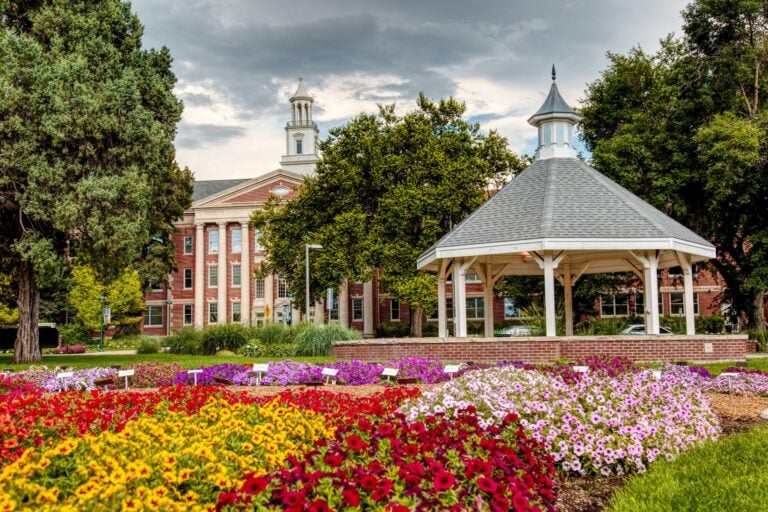How Urban Gardening Helps Cut the Climate Weight of Cities
 The concrete jungle. The asphalt empire. The canyon of glass and steel. There are many ways to think of the big city, but rarely does that include images of farm-fresh vegetables and fruits ripening in the sun.
The concrete jungle. The asphalt empire. The canyon of glass and steel. There are many ways to think of the big city, but rarely does that include images of farm-fresh vegetables and fruits ripening in the sun.
Nowadays, however, you don’t have to give up the simple pleasures of a thriving garden or the incomparable taste of tomatoes just off the vine. In fact, now more than ever, urbanites are rediscovering the joys of nature and the sustenance of Mother Earth through their own little urban oasis.
Urban farming, or urban agriculture, is gaining in popularity even in some of the world’s largest and most densely populated cities, and with good reason. As more and more people move into the city, they are discovering the vast and wide-ranging benefits of urban farming, not only for the growers themselves, but also for the community, the economy, and the climate.
The Many Faces of Urban Farming
There’s really no one-size-fits-all approach to urban gardening. These unexpected Edens range from small, private container gardens cultivated on your very own balcony, to larger rooftop plots shared by residents of a multifamily apartment building, to cultivated green spaces in the center of town and shared by the entire community.
And the purposes for cultivating an urban farm are just as varied. For small-scale growers tending to their own personal mini-crops, a modest private garden can be a soothing pastime and a great source of healthy fruits and vegetables for the family.
On a larger scale, communal gardens can meet vital public needs. They provide a restful space for citizens to escape the clamor of the metropolis and yield harvests that can help municipalities combat the scourge of food insecurity.
Not only this, but an urban garden can also help feed your family when finances are tight. After all, if you have ever lived in a large city, or you are planning to make the move, then you are probably already quite familiar with the high costs of urban living.
The ability to grow your own healthy fruits and vegetables, to shop at a local farmers’ market, or to harvest from a community garden can be an ideal way to stock your kitchen with delicious and nutritious foods. Better still, the quality is almost sure to be far higher than produce grown on factory farms, laden with pesticides and chemicals, and shipped from across the country or around the world.
Urban Farming and Climate Change
As vast as the benefits of urban farming may be for growers and the communities in which they live, the attributes of an urban garden don’t end at the city limits. In fact, there is growing evidence that urban agriculture can help in the fight against climate change.
Studies increasingly show that the carbon footprint of cities is immense. The good news, however, is that green spaces can go far to mitigate the environmental threat posed by the metropole. In fact, the incorporation of green spaces throughout the city will do far more than simply reduce greenhouse emissions. It can also improve water quality, reduce noise pollution, and eliminate or decrease “heat islands” caused by concrete and glass construction.
Using those green spaces for agriculture is the ideal way to maximize the benefits of the urban oasis, nurturing the environment while feeding the bodies and the spirits of city residents. Indeed, even schools and universities are increasingly turning to urban gardens. They’re seeking not only to increase the healthy food supply but to arm future generations with the love of gardening and agriculture as well as the know-how to feed themselves and the world responsibly.
A Gentler Path
Urban agriculture benefits the people and the landscape in closest proximity to these urban oases. It also provides a powerful alternative to large-scale farming, which is highly detrimental to the environment. Small-scale cultivation consumes less land and requires less aggressive methods for pest control, soil fertility, and crop yields. And that decreases the likelihood that the soil will be overworked and, ultimately, depleted.
As we’ve already seen, urban agriculture is also a cheaper way to get nutritious food into cities, avoiding the high costs of transporting the produce hundreds, or even thousands, of miles. But the cost savings are only the beginning. Growing your own produce or utilizing community gardens means no greenhouse gas emissions for shipping.
With container gardens, you don’t even have to be dependent on the seasons. With artificial light, the proper seeds, and healthy fertilizer, you can keep the crops coming year-round, a truly sustainable way to feed your family and your community while nourishing the earth that nourishes you.
Sustainable agriculture isn’t just something for the remote countryside and rolling landscape. Now more than ever, urban farming is proving to be a popular and effective way to feed the community while protecting the environment.
 Ainsley Lawrence is a freelance writer with an interest in the intersections between wellness, education, and technology. She loves traveling to beautiful places and is frequently lost in a mystery podcast.
Ainsley Lawrence is a freelance writer with an interest in the intersections between wellness, education, and technology. She loves traveling to beautiful places and is frequently lost in a mystery podcast.


